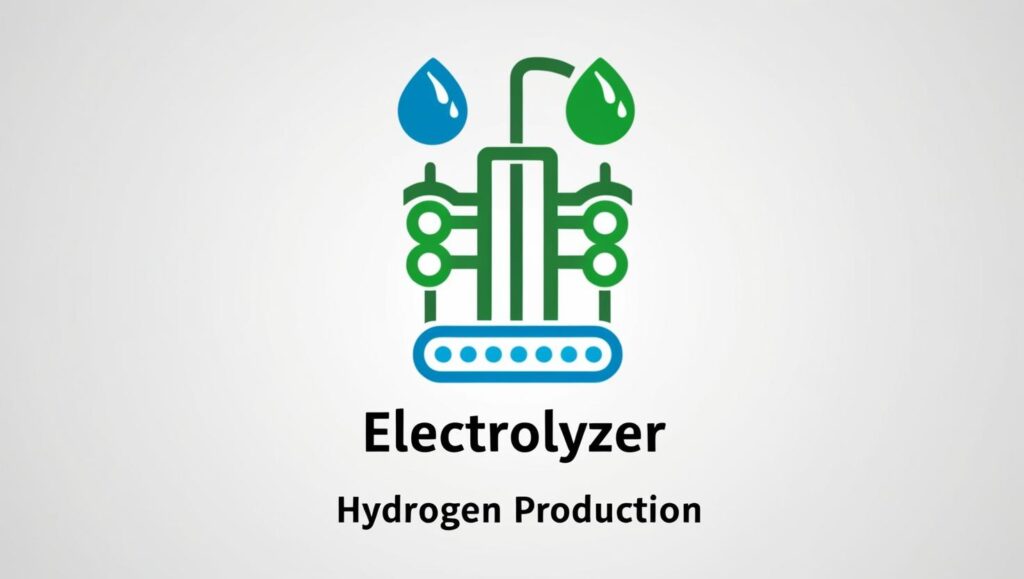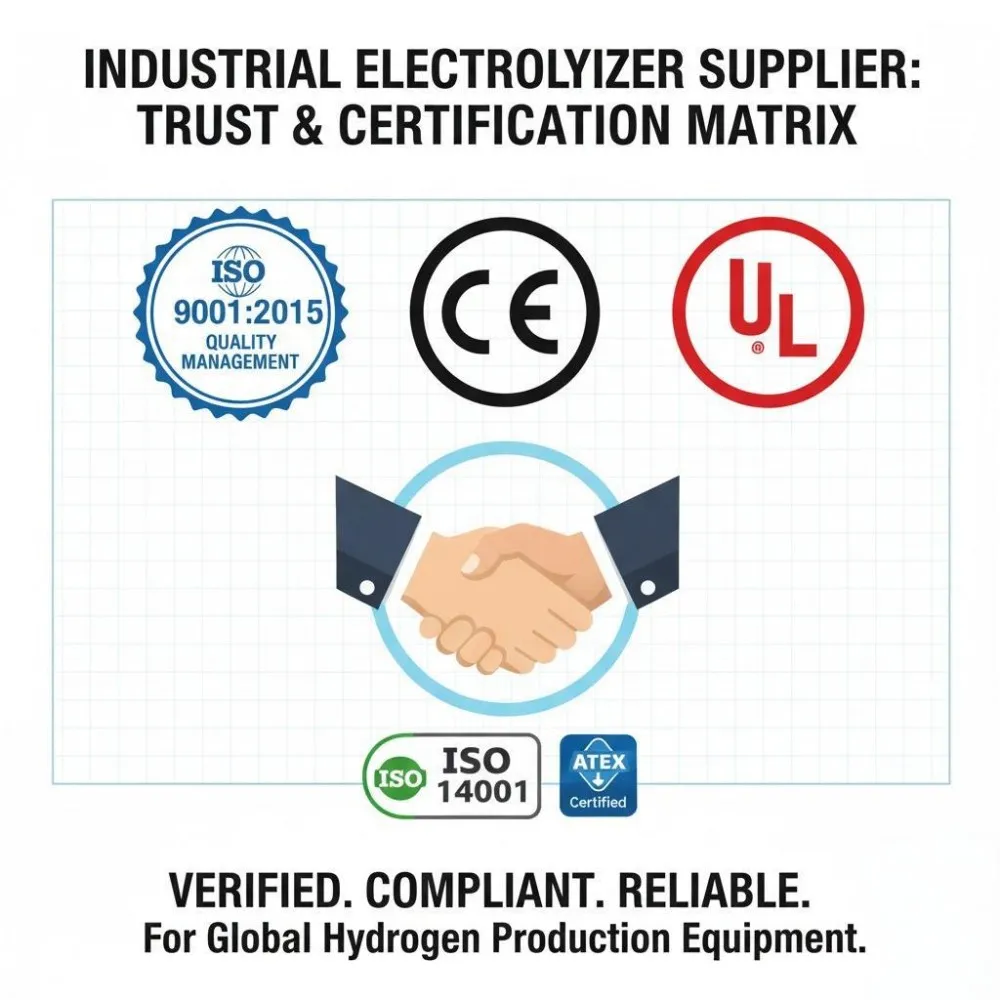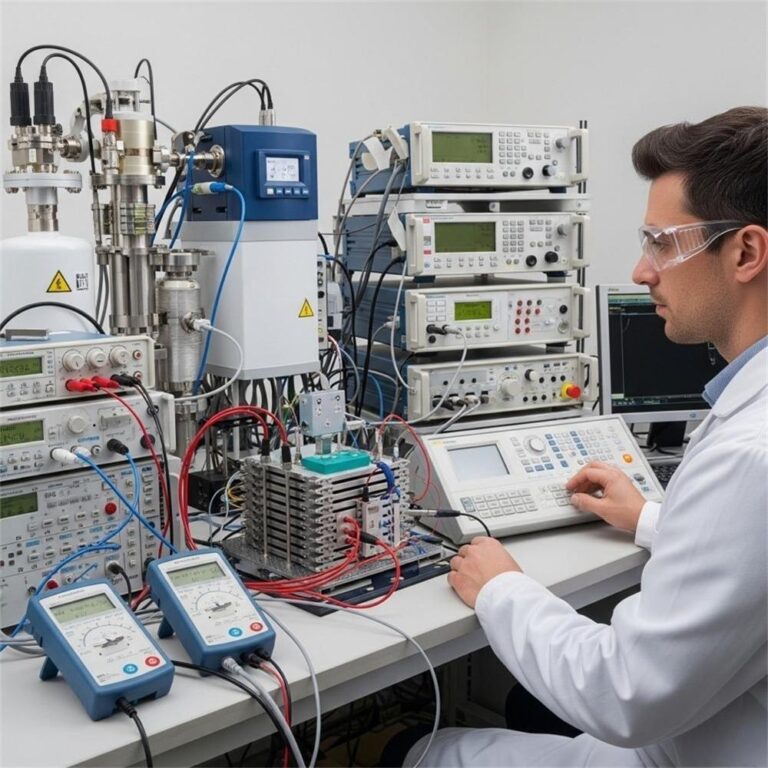Introduction to PEM Electrolysis Technology
What is PEM Electrolysis?
Proton Exchange Membrane (PEM) electrolysis is a cutting-edge hydrogen production method that splits water into hydrogen and oxygen using electricity. Unlike traditional alkaline systems, PEM electrolyzers use a solid polymer electrolyte to conduct protons from the anode to the cathode, resulting in ultra-pure hydrogen gas.
How PEM Electrolyzers Work
PEM electrolyzers operate by applying a direct current across two electrodes immersed in water. The key innovation is the proton exchange membrane, which allows hydrogen ions to pass through while blocking gases. This design supports high current densities, compact system architecture, and rapid dynamic response—key traits for modern clean energy infrastructure.

High Purity Hydrogen Production
99.999% Pure Hydrogen Output
One of the standout features of PEM technology is its ability to consistently produce hydrogen at 99.999% purity. This high level of cleanliness makes it ideal for sensitive industrial and scientific applications.
Importance for Fuel Cells and Industry
Purity is essential for fuel cells, semiconductors, and medical-grade hydrogen. Contaminants, often found in hydrogen from alkaline systems, can damage equipment or reduce efficiency. PEM electrolyzers eliminate that concern.
Fast Response Time and Dynamic Operation
Real-Time Adaptability to Renewable Energy
PEM systems can respond in milliseconds to fluctuations in power supply. This makes them exceptionally well-suited for pairing with intermittent renewable energy sources like solar and wind.
Why Speed Matters in Energy Storage Systems
Fast load-following capabilities mean PEM electrolyzers can rapidly ramp up or down, helping balance grid demand and store surplus renewable power as green hydrogen.
Compact Design and Modular Scalability
Space-Saving Advantages
PEM systems are often 5 to 10 times smaller than their alkaline counterparts. Their compact nature is a significant asset for urban or space-limited industrial environments.
Scalability for Small and Large Applications
From 100 kW pilot systems to multi-MW industrial setups, PEM electrolyzers offer modularity that enables gradual scaling or immediate deployment at full capacity.
Enhanced Safety Features
Solid Electrolyte Benefits
PEM technology uses a solid-state electrolyte, which reduces risks associated with liquid electrolytes, such as chemical spills or leaks.
Leak-Proof and Pressure-Resistant Design
The enclosed, pressurized system design enhances operational safety. Many PEM systems can operate at pressures of 30–80 bar, reducing the need for external compression.
Top 7 Advantages of PEM Electrolysis Systems
1. Higher Energy Efficiency
- Operating efficiencies range between 70–80% (LHV).
- Minimal heat loss due to solid-state design.
- Excellent match for renewable grid services.
2. Superior Purity of Hydrogen Output
- Consistent 99.999% purity without further purification.
- Eliminates need for dryers or purifiers in many applications.
- Suitable for fuel cells, semiconductors, and laboratories.
3. Compact System Design
- Smaller footprint reduces real estate costs.
- Easy integration into existing infrastructure.
- Modular design enables flexible upgrades.
4. Faster Response Times
- Cold starts in under 5 minutes.
- Full ramp-up from 0–100% in seconds.
- Perfect for load-following in power-to-gas applications.
5. Higher Operating Pressure Capability
- Up to 30–80 bar hydrogen delivery directly from the stack.
- Cuts down on compressor use and associated energy losses.
- Simplifies downstream storage and transport.
6. Greater Operational Flexibility
- Operates from 20% to 150% of rated load.
- Adapts to off-peak and surplus energy use.
- Automatic load balancing via smart control systems.
7. Longer System Lifespan
- Modern PEM membranes can exceed 60,000+ hours.
- Corrosion-resistant electrodes enhance longevity.
- Lower total maintenance and part replacement costs.
Industrial Applications Benefiting from PEM Advantages
- Renewable Energy Storage: Converts surplus solar/wind power into hydrogen.
- Refineries & Petrochemicals: Cleaner alternative to SMR-based hydrogen.
- Transport Fueling: Enables clean hydrogen for fuel cell EVs and fleets.
- Green Steel Manufacturing: Reduces CO₂ footprint in high-heat industries.
Cost-Benefit Analysis for Industrial Buyers
| Factor | PEM Electrolysis | Alkaline Electrolysis |
|---|---|---|
| Capex | Moderate-High | Low-Moderate |
| Opex | Low | Higher (due to maintenance) |
| Efficiency | 70–80% | 55–65% |
| Purity | 99.999% | ~95–98% |
| Safety | High | Moderate |
| Flexibility | Excellent | Limited |
ROI Considerations
- Payback period: 5–8 years, depending on energy prices and utilization.
- Incentives: Many 2025 hydrogen incentives favor clean, high-efficiency technologies like PEM.
Future Outlook for PEM Technology
- Efficiency Gains: Advanced catalysts and membrane innovations will push efficiency >85%.
- Cost Reductions: Mass production and material innovations are driving down prices.
- Large-Scale Projects: Gigawatt-scale electrolyzer parks already underway across Europe and Asia.
Choosing the Right PEM Electrolyzer
Key Specifications to Evaluate
- Hydrogen output rate (Nm³/hr or kg/day)
- Operating pressure and temperature ranges
- Stack lifetime and maintenance intervals
Sizing Considerations
- Match electrolyzer capacity with renewable energy availability
- Ensure output meets downstream compression/storage needs
Vendor Selection Criteria
- Proven field performance
- Customer support and warranty services
- Integration support with existing systems
Conclusion & Next Steps
PEM electrolysis stands at the forefront of clean hydrogen production in 2025. With unmatched purity, flexibility, and compatibility with renewables, it offers a compelling solution for industries aiming to decarbonize.
Why Choose PEM Today?
- Meets industrial-grade standards
- Aligns with clean energy policies
- Reduces total ownership costs over time
Ready to explore PEM solutions?
Contact our hydrogen technology experts today for a personalized consultation and quote tailored to your operational needs.
FAQs: PEM Electrolysis for Hydrogen Production
Q1: What makes PEM more efficient than alkaline electrolysis?
PEM electrolyzers use a solid polymer membrane, allowing for higher current densities, faster startup, and less energy loss.
Q2: Can PEM electrolyzers run on solar or wind energy?
Yes, they’re ideally suited for fluctuating power sources due to their rapid response time.
Q3: How pure is the hydrogen from PEM electrolysis?
Up to 99.999%, which meets fuel cell and semiconductor-grade standards.
Q4: Is PEM electrolysis safe for industrial use?
Absolutely. The design minimizes chemical risks and features pressure-resistant, leak-proof architecture.
Q5: What industries benefit most from PEM technology?
Energy storage, transportation, steel production, electronics, and refineries are leading adopters.







